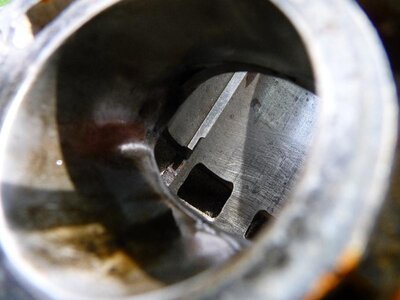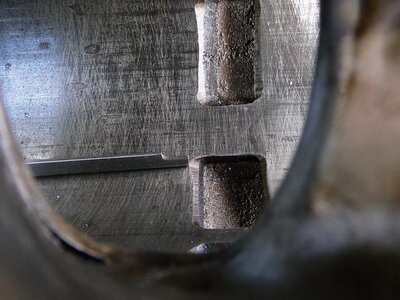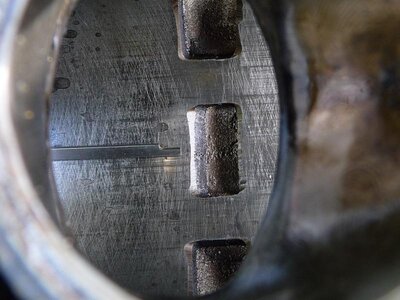It's more complicated than just that. Carbs, pipe, pump setup, compression ratio and head design all have a roll into how much you can do with advancing the timing.
It is a Kawi 650, I'm not looking for speed because I just want to get into a bit of freestyle.
It has:
- 42mm Keihin carb
-stock head, just polished and deburred
-compression ratio is stock at 7.2:1 having a 76mm bore and 70mm stroke with 145 compression on both cyl.
-the exhaust ports measured out at 55mm wide, I have not modified the ports, only polished them. I think this engine was ported before I owned it
-stock pump with a replica WetWolf short pump cone
-stock impeller
-Westcoast complete exhaust
-stock waterbox
-stock eletrical
Waterhawk, I'm not a bolt on junkie, if I were I wouldn't be asking questions, I would just do it. I stand behind blueprinting first and modifying later but when you have a 400 dollar ski which wasn't meant to be a great freestyle ski to begin with, sinking a ton of time and money on blueprinting isn't worth it. I just want a little more than stock performance and am only going on what I can find for data about tried methods that worked out. Granted nobody went into detail about what other mods they were using when they went with certain mods, but they still mentioned that they worked. If I don't ask first then I could grenade the engine and really be kicking myself for not asking.
I have heard the "get a SJ" statement all too many times and I will stand my ground, if anyone cares to sell one to me in as good of shape as my Kawi for the same 400 bucks I paid for it, which means clean condition hull and good engine, and includes free shipping then I will gladly take it. Otherwise please refrain from the politics, I do want a SJ, but it's next to impossible to find one here and what I have was all that was available at the time. In fact I have yet to find another stand-up ski for sale since and I have been looking because I want a SJ, 750 SX or 800 SXR to pop up. IMO, I'd rather have something I can get out on the water with now, then be standing around on the sand while all my buddies are out rippin it up and I'm regretting not buying what I have because I listened to everyone say don't get it. Now can we all just move along and get past the politics please. :Banane35:



